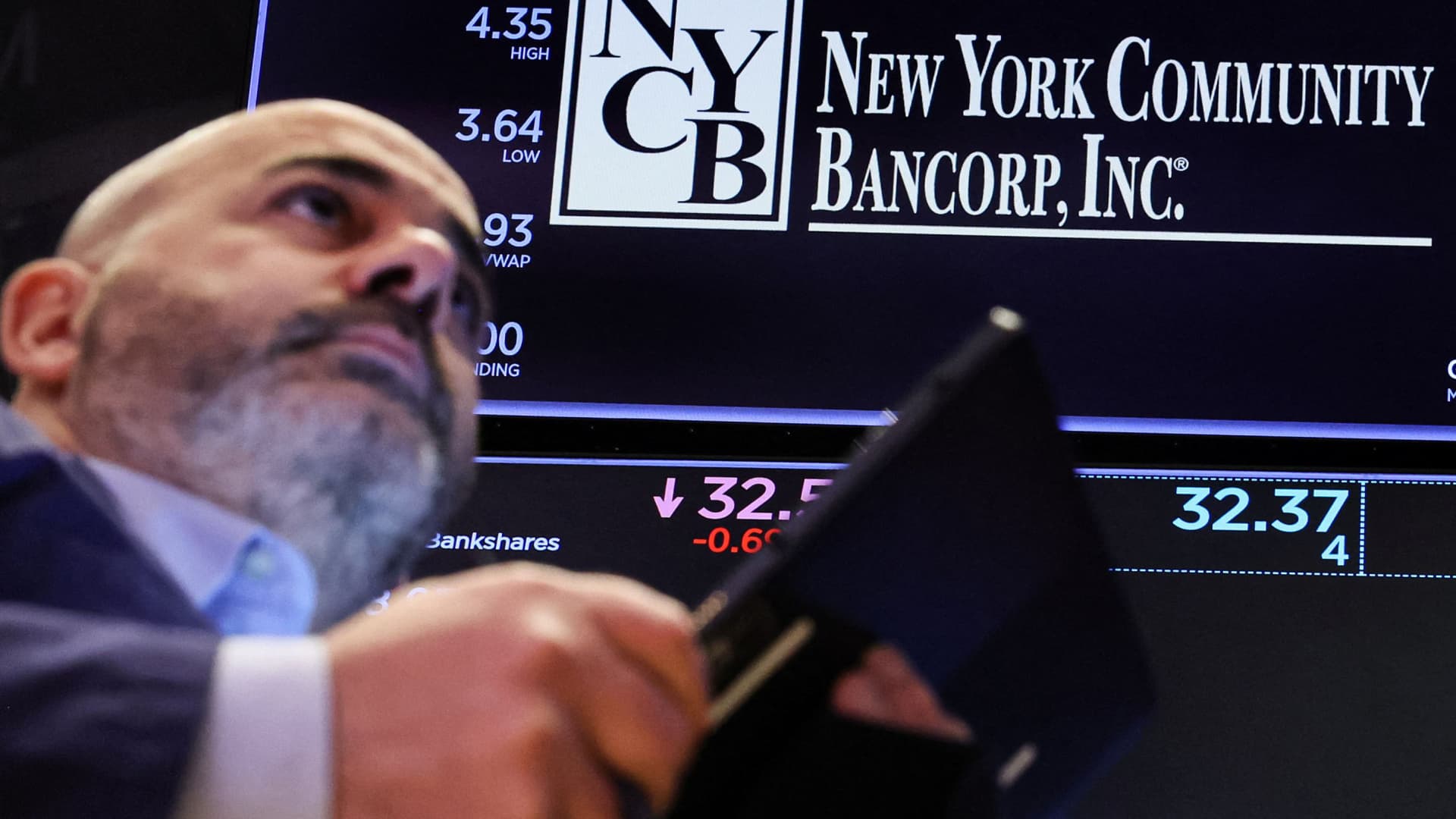
Traders work on the floor at the New York Stock Exchange (NYSE) in New York City, U.S., February 7, 2024.
Brendan Mcdermid | Reuters
The benefits of scale will never be more obvious than when banks begin reporting quarterly results on Friday.
Ever since the chaos of last year’s regional banking crisis that consumed three institutions, larger banks have mostly fared better than smaller ones. That trend is set to continue, especially as expectations for the magnitude of Federal Reserve interest rates cuts have fallen sharply since the start of the year.
The evolving picture on interest rates — dubbed “higher for longer” as expectations for rate cuts this year shift from six cuts to perhaps three – will boost revenue for big banks while squeezing many smaller ones, adding to concerns for the group, according to analysts and investors.
JPMorgan Chase, the nation’s largest lender, kicks off earnings for the industry on Friday, followed by Bank of America and Goldman Sachs next week. On Monday, M&T Bank posts results, one of the first regional lenders to report this period.
The focus for all of them will be how the shifting view on interest rates will impact funding costs and holdings of commercial real estate loans.
“There’s a handful of banks that have done a very good job managing the rate cycle, and there’s been a lot of banks that have mismanaged it,” said Christopher McGratty, head of U.S. bank research at KBW.
Pricing pressure
Take, for instance, Valley Bank, a regional lender based in Wayne, New Jersey. Guidance the bank gave in January included expectations for seven rate cuts this year, which would’ve allowed it to pay lower rates to depositors.
Instead, the bank might be forced to slash its outlook for net interest income as cuts don’t materialize, according to Morgan Stanley analyst Manan Gosalia, who has the equivalent of a “sell” rating on the firm.
Net interest income is the money generated by a bank’s loans and securities, minus what it pays for deposits.
Smaller banks have been forced to pay up for deposits more so than larger ones, which are perceived to be safer, in the aftermath of the Silicon Valley Bank failure last year. Rate cuts would’ve provided some relief for smaller banks, while also helping commercial real estate borrowers and their lenders.
Valley Bank faces “more deposit pricing pressure than peers if rates stay higher for longer” and has more commercial real estate exposure than other regionals, Gosalia said in an April 4 note.
Meanwhile, for large banks like JPMorgan, higher rates generally mean they can exploit their funding advantages for longer. They enjoy the benefits of reaping higher interest for things like credit card loans and investments made during a time of higher rates, while generally paying low rates for deposits.
JPMorgan could raise its 2024 guidance for net interest income by an estimated $2 billion to $3 billion, to $93 billion, according to UBS analyst Erika Najarian.
Large U.S. banks also tend to have more diverse revenue streams than smaller ones from areas like wealth management and investment banking. Both should provide boosts in first-quarter results, thanks to buoyant markets and a rebound in Wall Street activity.
CRE exposure
Furthermore, big banks tend to have much lower exposure to commercial real estate compared to smaller players, and have generally higher levels of provisions for loan losses, thanks to tougher regulations on the group.
That difference could prove critical this earnings season.
Concerns over commercial real estate, especially office buildings and multifamily dwellings, have dogged smaller banks since New York Community Bank stunned investors in January with its disclosures of drastically larger loan provisions and broader operational challenges. The bank needed a $1 billion-plus lifeline last month to help steady the firm.
NYCB will likely have to cut its net interest income guidance because of shrinking deposits and margins, according to JPMorgan analyst Steven Alexopoulos.
There is a record $929 billion in commercial real estate loans coming due this year, and roughly one third of the loans are for more money than the underlying property values, according to advisory firm Newmark.
“I don’t think we’re out of the woods in terms of commercial real estate rearing its ugly head for bank earnings, especially if rates stay higher for longer,” said Matt Stucky, chief portfolio manager for equities at Northwestern Mutual.
“If there’s even a whiff of problems around the credit experience with your commercial lending operation, as was the case with NYCB, you’ve seen how quickly that can get away from you,” he said.







